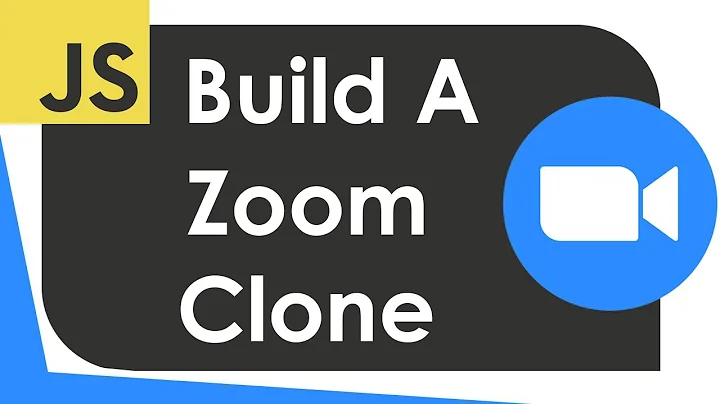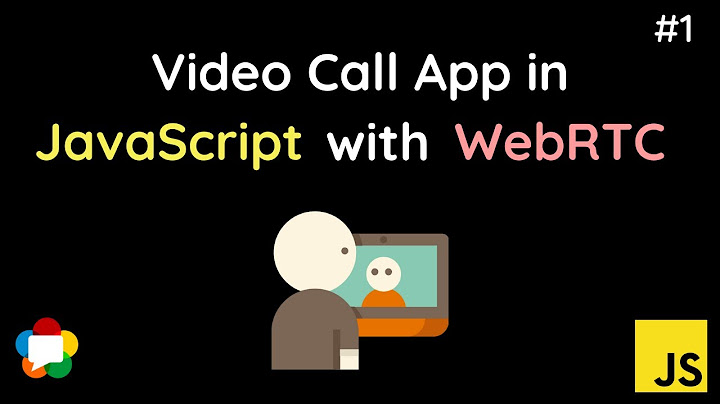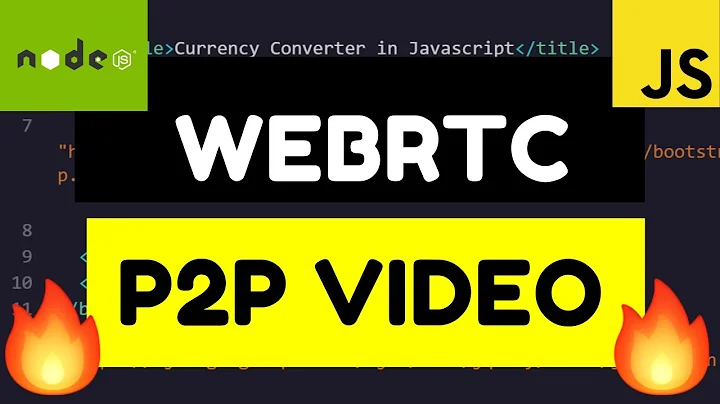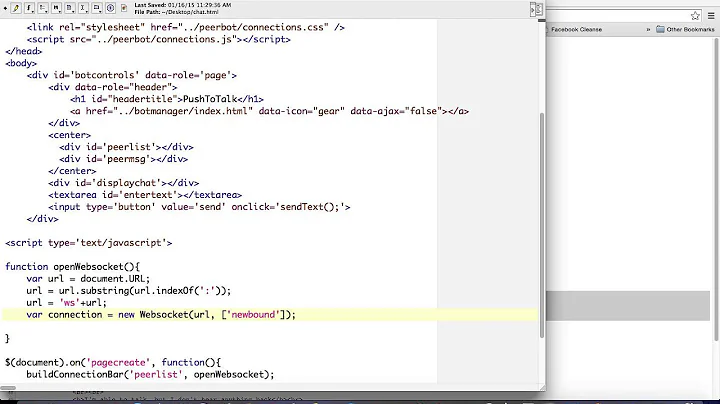P2P Video Confrencing using HTML5 or Javascript
Solution 1
HTML5rocks has excellent tutorial on this.
To summarize below are the steps involved:-
- Get streaming audio, video or other data.
- Get network information such as IP address and port, and exchange this with other WebRTC clients (known as peers) to enable connection, even through NATs and firewalls. Coordinate 'signaling' communication to report errors and initiate or close sessions.
- Exchange information about media and client capability, such as resolution and codecs.
- Communicate streaming audio, video or data. To acquire and communicate streaming data,
WebRTC implements the following APIs. MediaStream: get access to data streams, such as from the user's camera and microphone. RTCPeerConnection: audio or video calling, with facilities for encryption and bandwidth management. RTCDataChannel: peer-to-peer communication of generic data.
Solution 2
You are obviously only asking for JavaScript here, but if you are a .NET or Mono dev you can install the nuget package XSockets.Sample.WebRTC, that will provide a JavaScript video conference for you... and also read this guide about it http://xsockets.net/blog/tutorial-building-a-multivideo-chat-with-webrtc
Related videos on Youtube
Comments
-
 Rajendra Khabiya over 1 year
Rajendra Khabiya over 1 yearI am trying to build video conferencing using html5 and javascript till now i am able to stream my camera capture and display it on canvas
here is the code
<!DOCTYPE html> <html xmlns="http://www.w3.org/1999/xhtml" dir="ltr"> <head> <style> nav .search { display: none; } .demoFrame header, .demoFrame .footer, .demoFrame h1, .demoFrame .p { display: none !important; } h1 { font-size: 2.6em; } h2, h3 { font-size: 1.7em; } .left { width: 920px !important; padding-bottom: 40px; min-height: auto !important; padding-right: 0; float: left; } div.p { font-size: .8em; font-family: arial; margin-top: -20px; font-style: italic; padding: 10px 0; } .footer { padding: 20px; margin: 20px 0 0 0; background: #f8f8f8; font-weight: bold; font-family: arial; border-top: 1px solid #ccc; } .left > p:first-of-type { background: #ffd987; font-style: italic; padding: 5px 10px; margin-bottom: 40px; } .demoAds { position: absolute; top: 0; right: 0; width: 270px; padding: 10px 0 0 10px; background: #f8f8f8; } .demoAds a { margin: 0 10px 10px 0 !important; display: inline-block !important; } #promoNode { margin: 20px 0; } @media only screen and (max-width : 1024px) { .left { float: none; } body .one .bsa_it_ad { position: relative !important; } } </style> <style> video { border: 1px solid #ccc; display: block; margin: 0 0 20px 0; } #canvas { margin-top: 20px; border: 1px solid #ccc; display: block; } </style> </head> <body> <!-- Add the HTML header --> <div id="page"> <!-- holds content, will be frequently changed --> <div id="contentHolder"> <!-- start the left section if not the homepage --> <section class="left"> <!-- Ideally these elements aren't created until it's confirmed that the client supports video/camera, but for the sake of illustrating the elements involved, they are created with markup (not JavaScript) --> <video id="video" width="640" height="480" autoplay></video> <button id="snap" class="sexyButton">Snap Photo</button> <canvas id="canvas" width="640" height="480"></canvas> <script> // Put event listeners into place window.addEventListener("DOMContentLoaded", function() { // Grab elements, create settings, etc. var canvas = document.getElementById("canvas"), context = canvas.getContext("2d"), video = document.getElementById("video"), videoObj = { "video": true, "audio" : true }, errBack = function(error) { console.log("Video capture error: ", error.code); }; // Put video listeners into place if(navigator.getUserMedia) { // Standard navigator.getUserMedia(videoObj, function(stream) { video.src = stream; video.play(); }, errBack); } else if(navigator.webkitGetUserMedia) { // WebKit-prefixed navigator.webkitGetUserMedia(videoObj, function(stream){ video.src = window.webkitURL.createObjectURL(stream); video.play(); }, errBack); } // Trigger photo take document.getElementById("snap").addEventListener("click", function() { context.drawImage(video, 0, 0, 640, 480); }); }, false); </script> </section> <style> body .one .bsa_it_ad { background: #f8f8f8; border: none; font-family: inherit; width: 200px; position: absolute; top: 0; right: 0; text-align: center; border-radius: 8px; } body .one .bsa_it_ad .bsa_it_i { display: block; padding: 0; float: none; margin: 0 0 5px; } body .one .bsa_it_ad .bsa_it_i img { padding: 10px; border: none; margin: 0 auto; } body .one .bsa_it_ad .bsa_it_t { padding: 6px 0; } body .one .bsa_it_ad .bsa_it_d { padding: 0; font-size: 12px; color: #333; } body .one .bsa_it_p { display: none; } body #bsap_aplink, body #bsap_aplink:hover { display: block; font-size: 10px; margin: 12px 15px 0; text-align: right; } </style> </div> </body> </html>now i just want to stream video to make a conference between two people, i know i have to use webRTC or websocket but i don't know how to start writing code for that. any help or suggestion would be very helpfull.






